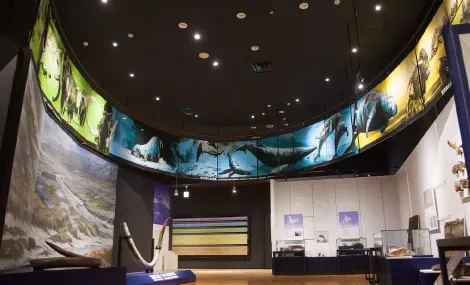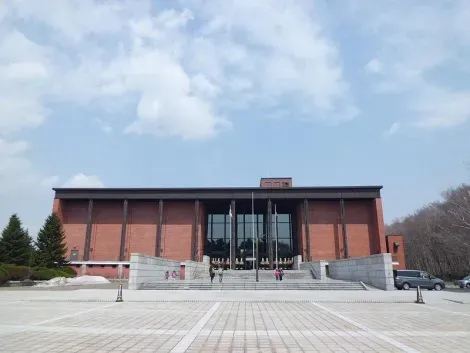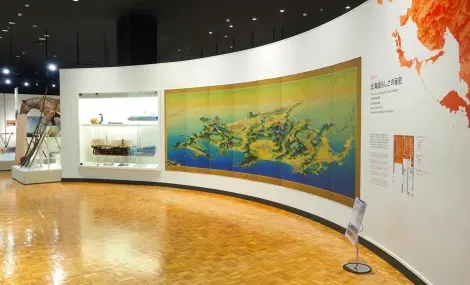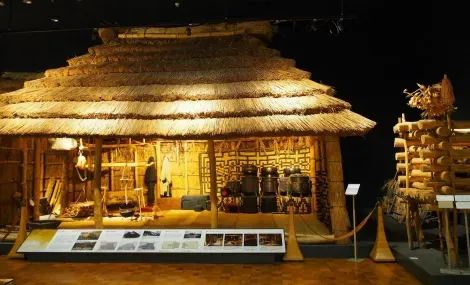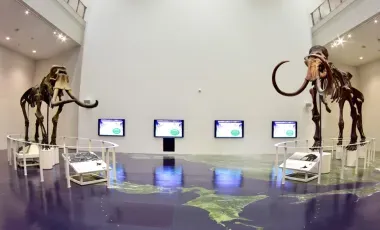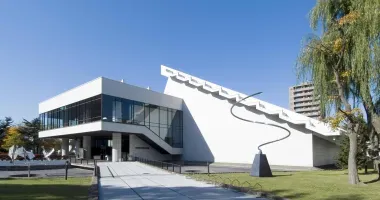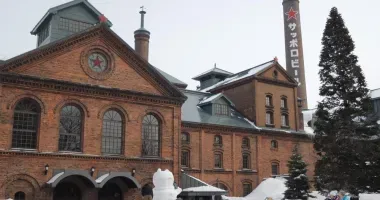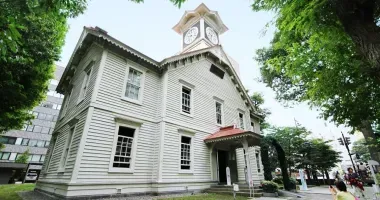The Hokkaido Museum 北海道博物館
History, culture and nature
To evoke Hokkaido, we usually talk about the grandiose natural landscapes, the extreme temperatures in winter or even the beautiful ski resorts. But the island of Hokkaido is not just about that. It has a unique culture inherited from the most ancient times; fruit of a particular interaction between man and nature with astonishing richness. Visit the Hokkaido Museum in Sapporo, the best ambassador of this unique culture.
Hokkaido DNA
It is in the heart of the Nopporo Shinin Koen prefectural natural park that the Hokkaido Museum opened its doors in April 2015. It replaces the old historical museum of Hokkaido, inaugurated in 1971 and takes place in the old red brick building completely renovated for the occasion. The new cultural facility of the municipality of Sapporo aims to enhance the nature, history and culture of Hokkaido. In these places, the visitor explores and studies the components of the culture of Hokkaido; what makes its identity. The relationship between man and the environment, history, folklore, fauna and flora, cultural contributions and the life of migrants from the island of Honshu, natural resources are part of the DNA of the island. the northernmost of the archipelago. Without forgetting, the Ainu culture which occupies a dominating place in the constitution of the culture of Hokkaido. By absorbing the National Center for Ethnographic Studies of the Ainu Culture, founded in 1994, the museum carries out specialized research on the language, entertainment, history and literature of the Ainu in a desire to transmit it to future generations.
To read: The Ainu minority
An ancient culture
The Hokkaido Museum first exhibits the skeletons of mammals living here 1.2 million years ago : a mammoth that came to Hokkaido from the north and a Naumann's elephant that came from the south from Honshu. Hokkaido has always been a crossroads linking the other Japanese islands to neighboring territories (Sakhalin Island, Kuril Islands); a land rooted in Northeast Asia. You have to go under the skeleton of the mammoth to appreciate all its splendor; a spectacle rare enough to be underlined! Several tactile devices also allow you to touch fossils and mammoth tusks.
The world of Ainu culture is honored in the second section of the permanent collections through traditional clothing, everyday objects, the art of weaving, food, language and musical instruments. A restored old dwelling is exhibited to present the habitat of this indigenous people of Japan.
The riches of nature
Hokkaido's unique identity is based on its natural resources and its extraordinary climatic and geological environment. Since its tremendous economic boom at the beginning of the 20th century which led to a leap in its growth and the expansion of its agriculture, Hokkaido remains today one of the main agricultural production areas of the archipelago. It was also able to count on abundant coal reserves and marine and mineral resources (gold, silver, copper, lead). The museum illustrates the singularity of the territory with anecdotes and meaningful objects: the bugles used by postmen to protect themselves from bears from the beginning of the Meiji period until the 1960s or even a metal rod created to break frozen excrement in outbuildings during harsh winters! Unique isn't it? The last sections of the museum emphasize the historical and societal upheavals of the last decades and finally the rich and fragile ecosystem of Hokkaido ; something to think about the impact of man on his environment.
See also: Daisetsuzan National Park
Address, timetable & access
Address
Timetable
Take bus 22 towards Hokkaido Historic Village from bus stop No. 10 at Sapporo Station. 15 min ride.Price
600 yen (4€50)Access
9:30 a.m. to 5 p.m. (May to September), 9:30 a.m. to 4:30 p.m. (October to April). Closed on Mondays.Website
http://www.hm.pref.hokkaido.lg.jp/en/




